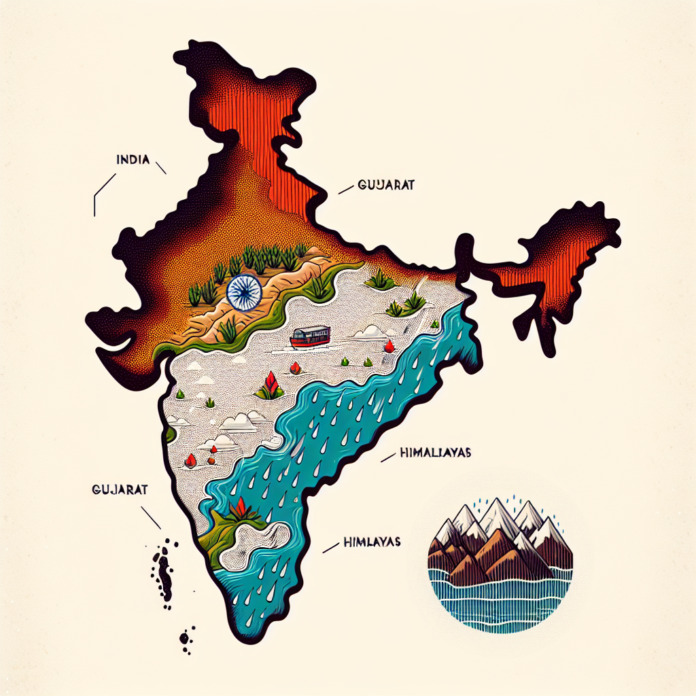Climate Change: Increased Rainfall in Gujarat and Decreased in Himalayas
Climate Change: Increased Rainfall in Gujarat, Reduced Precipitation in the Himalayas
Climate change continues to manifest its effects globally, with significant variations in weather patterns being observed across different regions. In India, these changes are particularly noticeable with Gujarat experiencing increased rainfall, while the Himalayas are witnessing a decline in precipitation levels.
Impact on Gujarat
Gujarat, a state known for its arid climate, has been experiencing a notable increase in rainfall over recent years. This shift can be attributed to changes in monsoon patterns, which are becoming more intense and unpredictable due to global warming. The increased rainfall has led to several consequences, both positive and negative.
On the positive side, the agricultural sector in Gujarat has benefited from the additional water, potentially leading to improved crop yields and more diverse farming opportunities. However, the downside includes the risk of flooding, which can damage infrastructure, disrupt daily life, and pose significant challenges to local authorities in terms of disaster management and urban planning.
Effects on the Himalayas
Conversely, the Himalayas are facing a decrease in precipitation, which poses severe risks to the region’s delicate ecosystem. Reduced snowfall and rain have led to the shrinking of glaciers, which are crucial sources of water for millions of people living downstream. This decline in water availability is threatening agriculture, hydropower generation, and biodiversity in the region.
The decrease in precipitation is also exacerbating the risk of landslides and soil erosion, as the lack of sufficient moisture weakens the soil structure. This can lead to disastrous consequences for communities residing in these mountainous regions, as well as for the infrastructure that supports them.
Broader Implications
These regional changes are emblematic of the broader impacts of climate change that are being felt worldwide. The altered precipitation patterns in Gujarat and the Himalayas highlight the urgency for adaptive strategies to mitigate these effects. Governments, local communities, and international organizations must collaborate to implement sustainable practices that can counteract the adverse impacts of climate change.
Efforts such as improving water management systems, investing in climate-resilient infrastructure, and promoting sustainable agricultural practices are critical. Additionally, raising awareness about climate change and its consequences is essential to mobilize collective action towards preserving natural resources and ensuring a stable future for the affected regions.
Conclusion
The contrasting weather patterns in Gujarat and the Himalayas serve as stark reminders of the complex challenges posed by climate change. As these regions adapt to their new realities, they underscore the need for comprehensive strategies that address both mitigation and adaptation, ensuring that communities can thrive despite the evolving climate.


